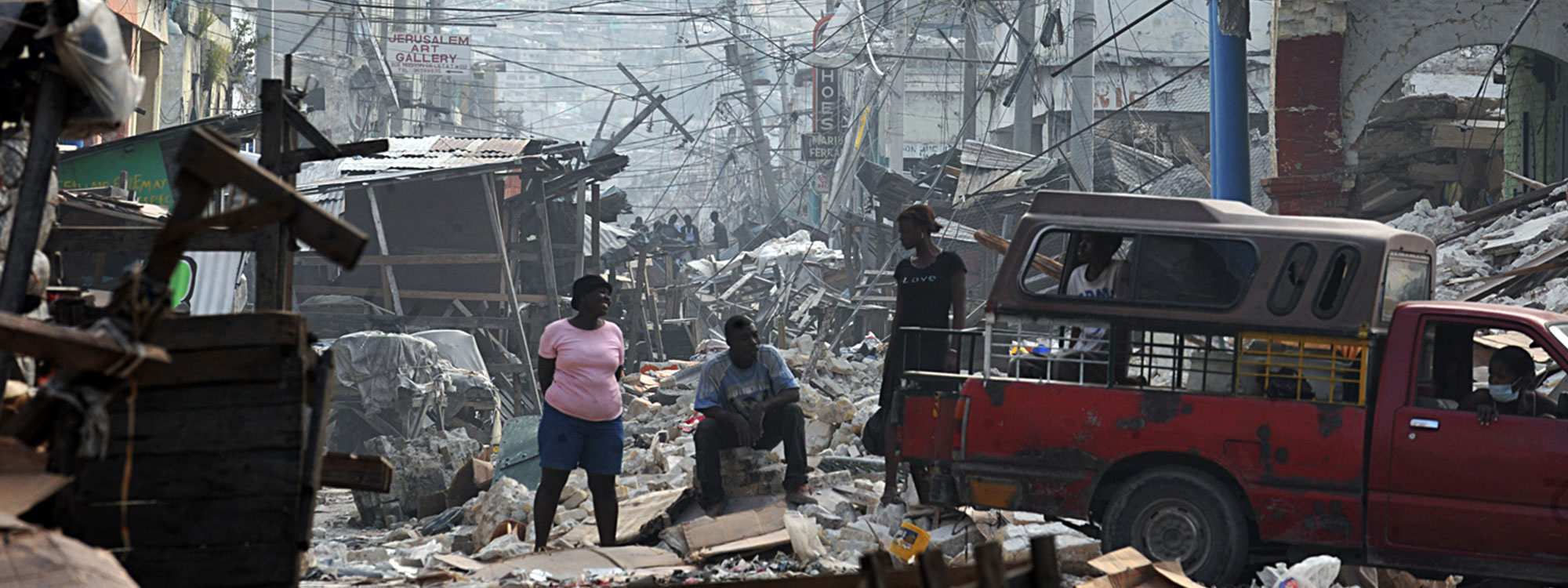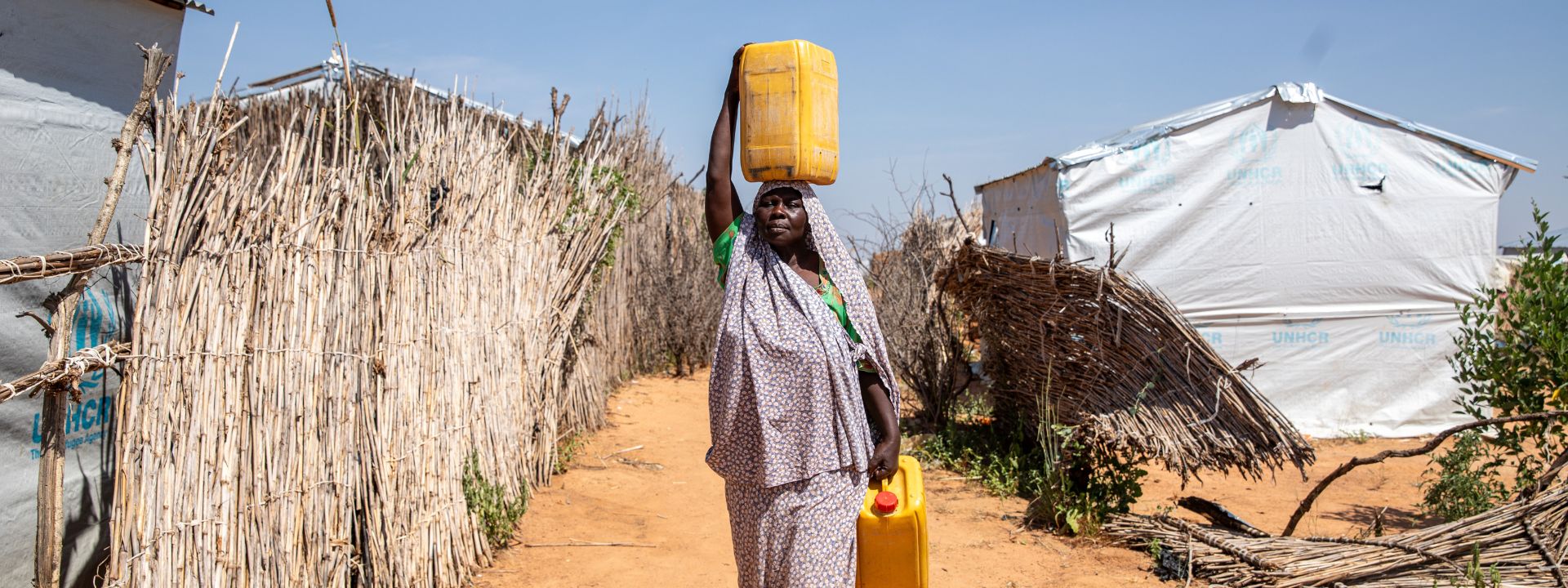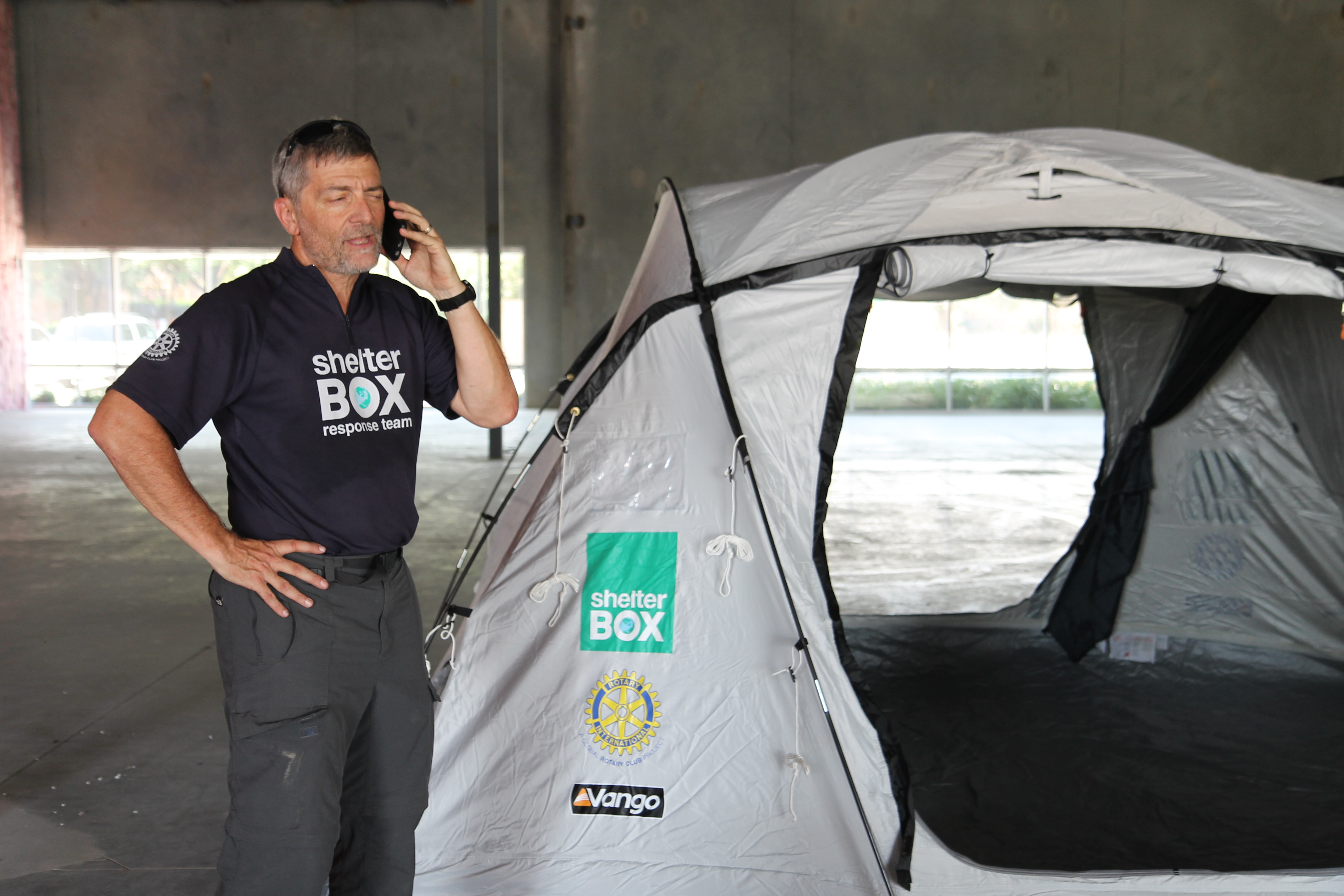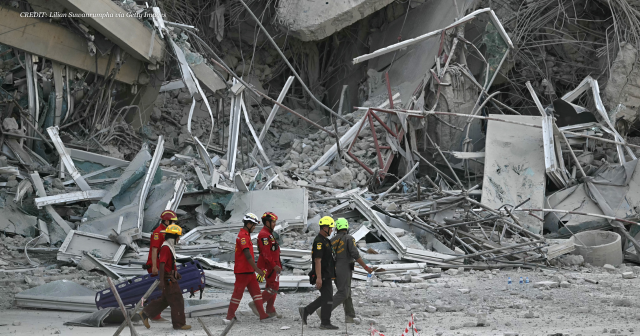
Blog
Remembering major earthquake responses – Gujarat 2001 and Haiti 2010
January 2001 and 2010 will be remembered in history for all the wrong reasons.
In January 2001, a powerful earthquake shook the state of Gujarat, India. Nine years later, on the same month, an even more devastating earthquake brought chaos to Haiti. Read on to find out more about the two deadly disasters, how ShelterBox responded, and more about earthquakes.
January is generally notorious for being a ‘quiet’ month. Falling right after the Christmas holidays, most people take the time to hunker down and quietly wait for the spring.
Here at ShelterBox, every January we’re reminded of two earthquake disasters that will remain in our history as two of our most important responses.
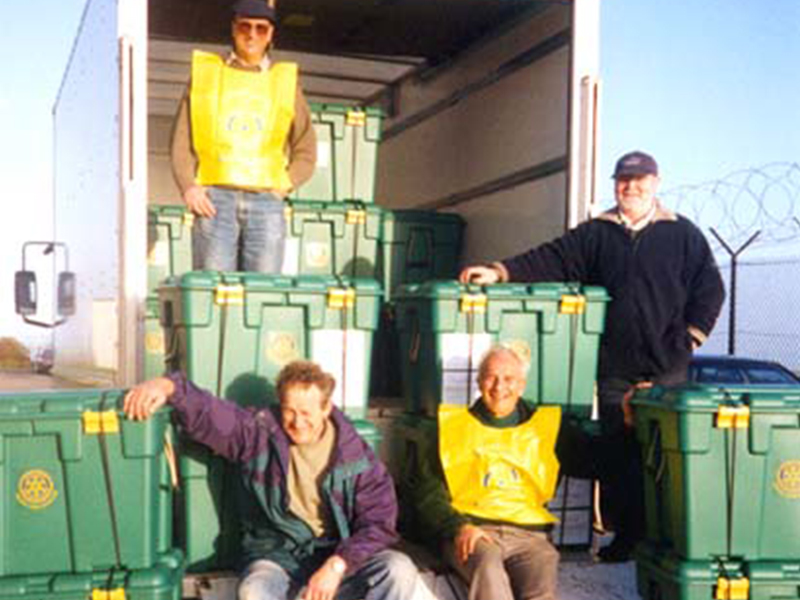
Boxes being unloaded in India, following the devastating earthquake in Gujarat.
2001 Gujarat earthquake
The disaster, also known as the Bhuj earthquake, killed nearly 20,000 people.
The 7.7 magnitude earthquake destroyed nearly half a million homes in India and over 1 million structures, including historic buildings.
Shortly after the disaster happened, a newly formed UK-based international disaster relief charity was called to send help. That was ShelterBox’s first-ever response.
Working in partnership with local Rotary contacts, we supported families who had been badly hit with emergency shelter aid and other essential items.
That was the first but certainly not the last earthquake that we’ve responded to. In fact, we’ve responded to more than 30 earthquakes in total since 2001 – including the deadly 2010 Haiti earthquake.
Did you know? According to Statistica, nearly 1 million people lost their lives to major hurricanes worldwide, from 2000-2015.
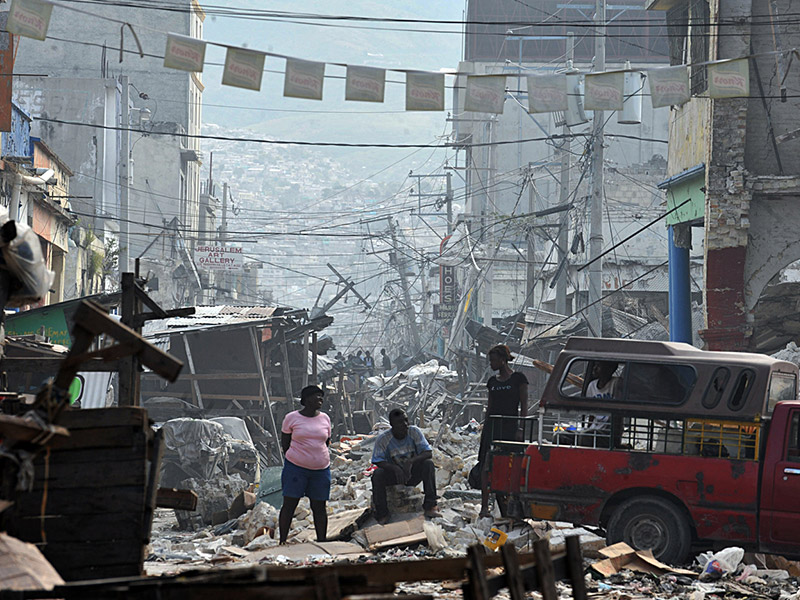
Devastation of an unimaginable scale: people standing amongst rubble in Haiti soon after the main quake shook the city of Port-au-Prince and its surroundings, killing thousands of people and flattening homes and infrastructure.
2010 Haiti earthquake
On 12 January 2010, people in Haiti experienced chaos and destruction on an unimaginable scale.
As if the initial 7.0 magnitude quake wasn’t devastating enough, it was quickly followed by aftershocks of 5.9 and 5.5 magnitude. Aftershocks continued to batter the area throughout the following weeks.
Scenes from the capital city of Port-au-Prince and the surrounding areas were of sheer devastation, as people sought refuge from crippled buildings. Homes were turned to rubble, families were separated, livelihoods were utterly destroyed.
We supported over 28,000 families who’d lost their homes and possessions to the Haiti earthquake with essential ShelterBox aid. This included tents to provide families with emergency shelter to start recovering, kitchen sets to help people cook and eat together again, and mosquito nets to protect against insect-borne diseases like malaria.
The deadly 2010 Haiti earthquake remains our largest response to a single natural hazard in our 20-year history.
Did you know? According to Statistica, 35,244 earthquakes occurred worldwide from 2000 to 2019.
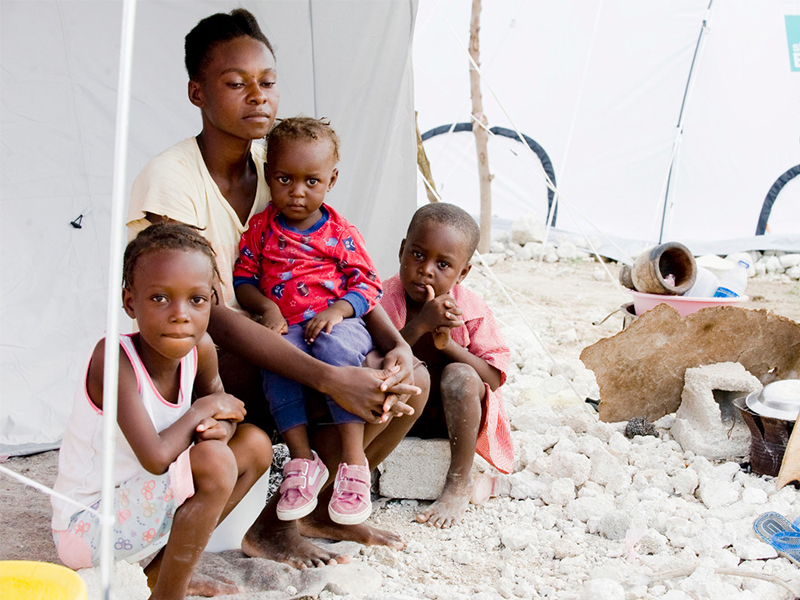
A family is sat outside their ShelterBox tent in Haiti after the devastating earthquake killed thousands in 2010.
Earthquakes: a common threat
Earthquakes occur across the world every day. We don’t hear about all of them, because most of them are too small to cause any damage.
Unlike cyclones and hurricanes, earthquakes are notoriously hard to predict. This makes it especially tricky for people who live in earthquake-prone areas, like the Ring of Fire.
What’s more, earthquakes can often trigger secondary hazards or disasters, that sometimes cause more harm than the actual quake. Landslides, tsunamis and flooding claim many lives every year, often as a result of a common earthquake.
An example of this is the 2011 Tōhoku earthquake and tsunami in Japan. The latter left nearly half a million people homeless and killed over 15,500. We supported more than 1,500 families who have been most affected by the tsunami.
Earthquakes, hurricanes, floods and volcanic eruptions will never stop happening. Despite the challenges posed by coronavirus during this past year, we continue to monitor disasters all over the world, ready to respond if necessary.
Find out more about earthquakes, why they happen and how we’ve responded over the years here.

